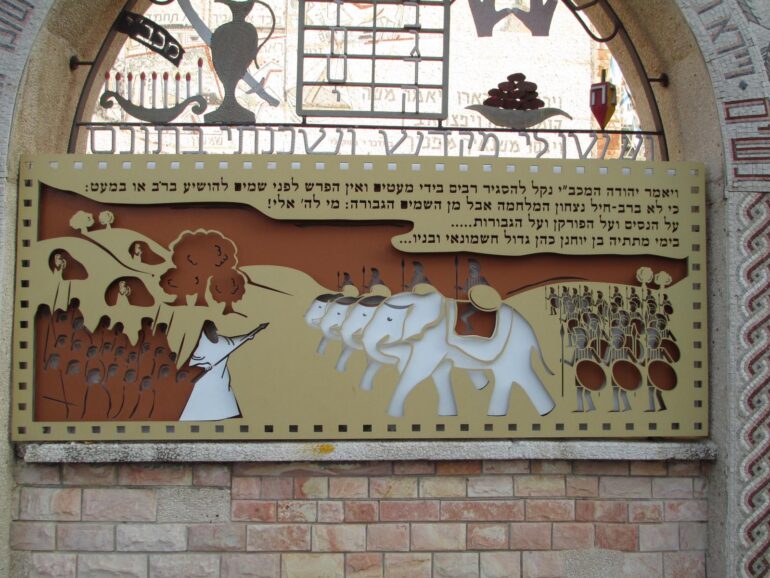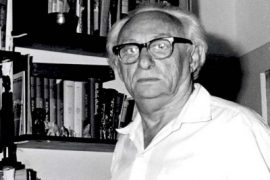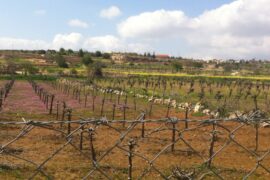It is interesting that in Jewish historiography, the Macedonians and Seleucids are referred to exclusively as “Yevanim” (Greeks). This terminology is used in the Talmud (Shabbat 21b), in the Ḥanukah addition to Al HaNisim, and in the verse of Ma’oz Tzur that discusses the Maccabean Revolt, among countless other mentions.
This identification of Alexander and Antiochus with Yavan is not simply an inaccurate conflation of these monarchs with the Greek states that the Macedonians conquered. Antiochus never ruled over any part of Greece. For our sages, though, Yavan as an entity has a greater significance.
Yavan is listed in B’reshit among the sons of Yefet, one of Noaḥ’s three sons, and is said to be the father of Elisha, Tarshish, Kitanim, and Dodanim. He is a brother of, among others, Madai (Medes) and Tiras (Persia according to Rashi).
Noaḥ blessed his son, “May Hashem enlarge Yefet” (B’reshit 9:27), which our sages understand to mean that Yefet’s descendants would hold extensive territories. The empires of Medes and Persia held vast territories, as did Alexander the Great. Even though he was not Greek himself, Alexander was student of Aristotle and spread Hellenistic ideals. As such, he and his empire could be considered Greek, and thus representative of Yavan. And more importantly, like Madai and Tiras, Alexander’s empire was “enlarged” and included a wide span of land. But most importantly for our sages, these empires of Madai, Tiras, and Yavan fulfilled the second part of Noaḥ’s blessing that Yefet would “dwell in the tents of Shem.” Each of these empires would conquer the Middle East, the traditional territory of Yefet’s brother Shem.
Our sages teach in the Talmud (Megilla 9b) that the essence of Yefet’s influence on Shem, and thus the children of Israel, is in aesthetic ideals of beauty (Yofi – similar etymologically to Yefet). Rashi notes that of all the nations derived from Yefet – Yavan – and especially their languages most strongly exemplify this beauty. It is thus unsurprising that the Maccabean Revolt was directed not just against the religious oppression of Israel by Antiochus, but also against the cultural imperialism of Hellenization.
Greek ideals of high culture and beauty in language, the human form, and especially art, went hand in hand with the Seleucid Empire’s attempts to integrate the people of Judea under their influence. We refer to our enemies in this period as “Yevanim” not for geopolitical reasons, but for the primordial cultural force that they represented and spread via their temporal power.
Against this backdrop, it becomes clear that true liberation from the perspective of Jewish historiography is not superficial political independence. To be truly free, we must break the bonds of not only military might, but also of “soft power” cultural imperialism.
In our day and age, we have seen Eretz Yisrael liberated from British imperial rule, the pinnacle of Yefet-European expansion and conquest. But despite this political liberation, the deeper cultural liberation has yet to occur. Israeli society is deeply entrenched in Anglo-American hegemony: the political system, the socio-economic structure, as well as the cultural and economic production of the state.
The recent announcement of a “Trump Station” for the Jerusalem light rail is only the latest and most blatantly crude instance of “independent” Israeli leaders flattering foreign tyrants. If we are to truly follow the examples of Matityahu ben Yoḥanan, Yehuda HaMaccabi, Yehonatan HaAphsi, and Shimon HaTasi (the leaders of the Maccabean Revolt), we would recognize that the power of B’nei Yefet is not just in their political clout but also in their cultural influence.
This connection between Western dominance and the primordial descendants of Yefet is not merely a convenient coincidence. According to the Radak, the sons of Magog (another son of Yefet and brother to Yavan, Tiras, and Madai), Ashkenaz and Rifat, are the progenitors of the Gauls and the Germanic tribes. The historic Saxons and Normans, both of whom conquered the British Isles and were instrumental in shaping Britain as we know it today, were of Gallic and Germanic origin. Anglo-American hegemony is as deeply rooted in the cultural imperialism of B’nei Yefet as the Hellenism of Antiochus and his Seleucid Empire.
Having upended the military domination of our historic homeland 71 years ago, we must now ask ourselves – how do we continue to liberate our nation, focusing on the values of B’nei Shem as exemplified in our tradition, and not following the prescribed social and political norms of B’nei Yefet?





